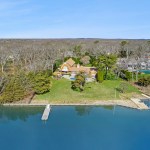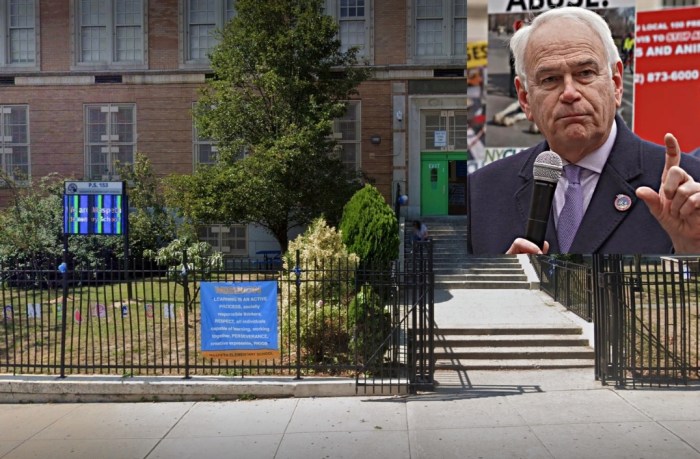A historical Sag Harbor home tied to an important village figure and also tied to one of America’s leading writers is in need of new stewards for the first time in more than a half-century.
Listed with Sotheby’s International Realty for $3.195 million, the prime piece of real estate at 207 Madison Street includes the main home, which dates back to 1841, a modern glass house that serves as guest quarters, and a detached garage. What’s in that garage also makes this listing stand out even more: A red, 1968 Ford Mustang convertible that once belonged to Truman Capote.
First, some history on the house and the man who built it.
Col. Henry Wentworth Hunt published the first issue of The Sag Harbor Corrector in 1822. He settled in Sag Harbor after an incredible young life that included being condemned to death in Port-au-Prince, Haiti, when officials in the world’s first Black republic, newly independent from France, mistook him for a Frenchman.
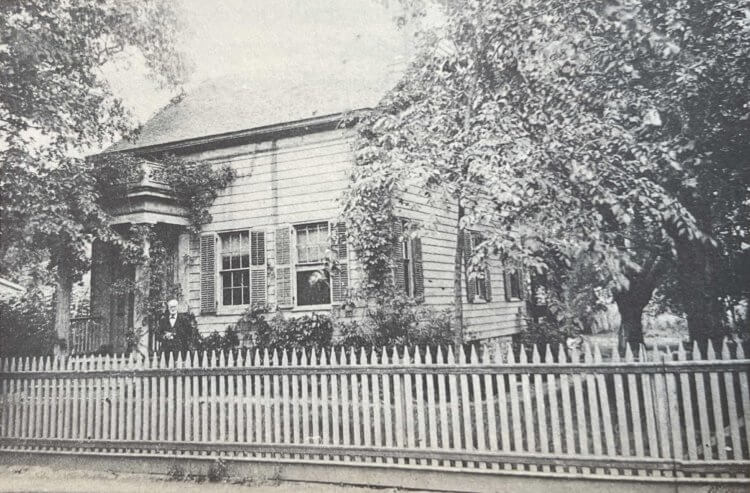
Hunt was born in Massachusetts, where he was an apprentice to a book publisher, learning to set type, read proof and bind books. According to a family history, he proof-read the second edition of the Bible ever to be printed in America.
Later, he ended up in the mahogany trade. During one voyage, he was said to have landed in Port-au-Prince, where an acting governor ordered he be shot at sundown. Just in the nick of time, General Henri Christophe, who would later become the republic’s ruler, returned and stepped in before the execution realizing Hunt was an American. Christophe placed him in command of the regiment and Hunt remained in Haiti for five years.
“Is it possible that Henry Hunt, in charge of troops, was one of Christophe’s enforcers?” writes Albert B. Southwick in a book called The Johnson Family of Hyde Park & Sag Harbor. “There is no way now to determine all the facts. At any rate, as a result of his experiences in Haiti, Mr. Hunt was known for the rest of his life as the ‘Old West Indian Colonel.’”
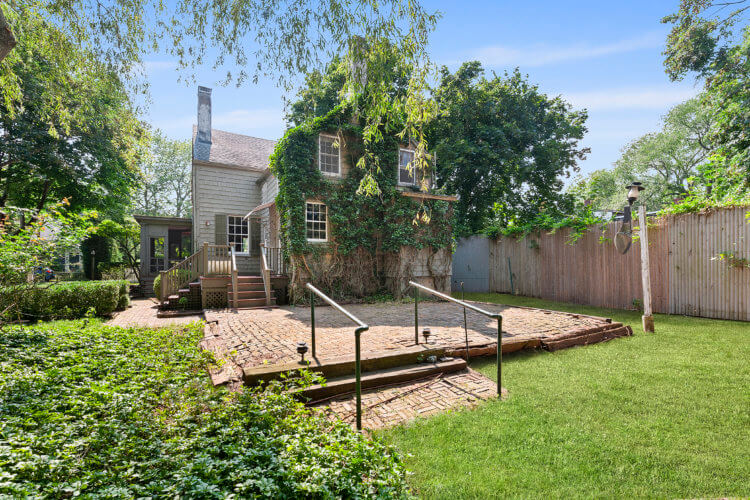
Back in America, Hunt had some trouble with the United States government during the War of 1812 and his vessel was seized. He sued for $150,000 and was granted $75,000. Unhappy with the amount, he appealed and ended up losing it all. He left New York City for Patchogue and married Frances Elizabeth Howard in 1816, before they settled in the busy port of Sag Harbor.
It was not long before Hunt took to the seas again, sailing on the American Libra, a Mexican Man-of-War, for Amelia Island in Florida, then owned by Spain, and helped erect fortifications. He returned home to Sag Harbor for good in July of 1819.
Hunt published The Corrector, first as a weekly reporting on the whaling boom and shipping issues, then as a semi-weekly, until his death in 1857. In its 101 years, the paper only had two publishers, Hunt and his son John. The paper was later absorbed by The Sag Harbor Express.
In 1841, he built the house on Madison Street in the classical revival architecture. A porch consisting of Doric columns supporting a Greek-style cornice covered the main entrance, and in later years was extended to cover the entire façade, according to a 1969 article in The Sag Harbor Pilot.
While the Hunts had 10 children, it was their daughter, Mary Chamberlain Hunt, who would take over the home with her husband, Dr. Peter Roosevelt Johnson. A little bit about him: His great-grandfather, Dr. Samuel Bard, was the personal physician to General George Washington.
After three generations of the family lived there, the Hunt-Johnson family sold it in 1951. There was one other owner, but Joe Petrocik and Myron Clement bought it in 1967 and lovingly restored it, taking great pride in its history. It was often on historical house tours.
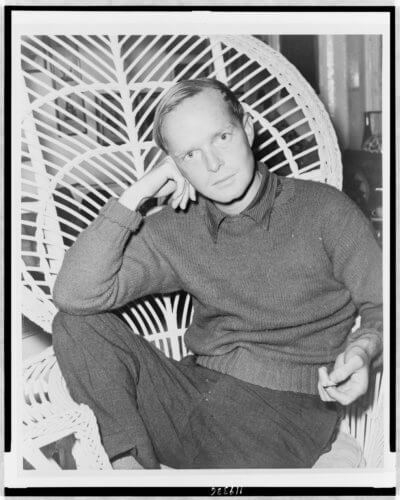
The couple happened to be friends with Truman Capote, which brings us back to the candy-apple red Mustang in the garage. The writer was known to tool around the South Fork — albeit sometimes too fast — in the Mustang.
They met Capote on a Sagaponack beach in the late 1960s when he approached them to inquire if they had seen his dog, Maggie, Petrocik remembered in an interview with this author for The East Hampton Star in 2018. The next day, while having lunch in Manhattan, where Clement ran a successful public relations firm with Petrocik, Capote happened to be at a nearby table.
“That was the beginning of a long, long friendship,” Petrocik said at the time.
While the In Cold Blood author had a home in Sagaponack, he often spent time at Clement and Petrocik’s house in Sag Harbor, where he would drink vodka and orange juice. They even had a room in the house they called “Truman’s bedroom.”
“I would venture to guess that it’s the front parlor,” says listing agent Pamela Walsh, “because there’s a painting of Truman Capote — it’s an original painting — lounging on like a sofa, kind of a grand sofa, I believe with a cat, over the fireplace in the front parlor, so I bet that’s what they’re calling the Truman Room.”
The interior of the home was obviously well cared for over the last half-century. The 4,761-square-foot home sits on 0.37 of an acre. The original part of the house features nine-foot ceilings in the living room, dining room and front parlor. “For that period, it was very unusual to have such high ceilings and, evidently, Colonel Hunt was very tall,” Walsh says.
“It’s not a typical Sag Harbor Village quaint, you know, tighter home,” she says. “When you walk into the house, it is really spacious.”
The original pumpkin pine floors are in pristine condition. “They’re extraordinary,” she says, adding that some planks are 20 inches wide.
The formal living room, meanwhile, features a wood-burning fireplace, built-in bookshelves and glass French doors leading to a screened-in porch. Another fireplace can be found in the front parlor.
A large eat-in-kitchen needs some updating, but the bones are evident. There are windows on three sides of the room and exposed wood beams give the space character. A full bathroom is located just off the kitchen.
Two sets of stairs lead to the second floor, one at the front of the house and one at the back. Up on the second floor, there are three large bedrooms (one with its own entrance using the back staircase) and a full bathroom, as well as a small office space. Two of the bedrooms feature their own fireplaces.
Despite being built originally in 1841, the home has a full basement with nearly seven-foot ceilings, providing a large laundry area and room for other amenities.
Toward the rear of the property, nestled among mature trees, is a unique accessory structure, a glass atrium.
Petrocik told Garden Design they wanted “something simple, transparent, modern, quite apart from the living history of our house.” When they saw a glasshouse on display at the Hampton Classic Horse Show, “Our attention quickly shifted from horses to houses,” Clement told the publication.

They met with the designer, who helped them come up with the plan for their new guest house. It offers a sitting room with 13.5-foot ceilings and a skylight, a full bathroom with a soaking tub, and an outdoor shower. French doors lead to a mahogany deck, which was built around a massive oak tree and overlooks a free-form pond. Two small wings jut out on both sides, one was used for tender plants, another as a potting area.

“When I’m inside it, I feel like I’m miles away from civilization, even though we’re only a stone’s throw from downtown Sag Harbor,” Petrocik told Garden Design. “It’s become the one place where we can really relax.”
You can tell that everyone who has owned that house has truly loved it,” Walsh says.
As for the Mustang, Petrocik and Clement always fancied it. Capote died in 1984, leaving it to his partner, the novelist Jack Dunphy, didn’t use it much, and when Dunphy died in 1992, Petrocik and Clement acquired it from the estate. They had it fully restored in 2004.
The license plate that reads “Capote” remains as a tribute. They loved to drive it around and listen to the Capote stories that other East Enders wanted to share. Despite a few unfortunate accidents in more recent years, the car remains in good shape.
Aventura Motors in Southampton, which restored the car in 2004 but has not seen it recently, estimated it could roughly be worth about $40,000.
Clement died later in 2018 and Petrocik passed away last year. His estate is selling the property.
Asked if Capote’s old car is part of the sale, Walsh says: “As I like to say, everything’s for sale and everything’s negotiable.”
Special thanks to the John Jermain Memorial Library, director Catherine Creedon & head of reference Susan Mullin.
This article appeared in the Labor Day issue of Behind The Hedges magazine. Read the digital edition here.






